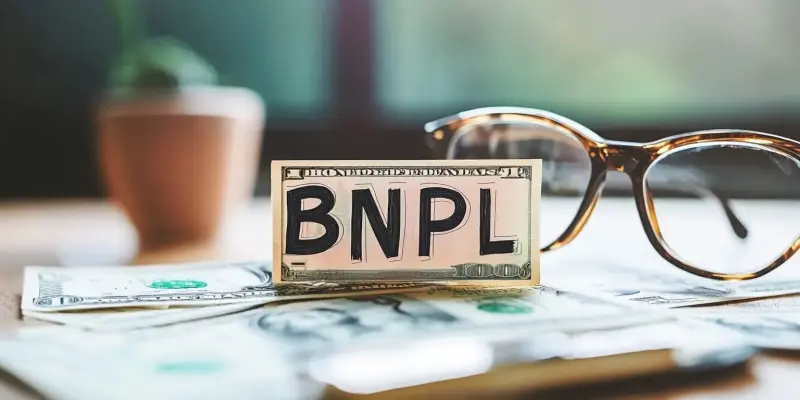As the holiday shopping season wraps up, you may find yourself in a situation where you’ve bought the wrong item, like the wrong color race car for your child, and need to return or exchange it. If you used a Buy Now Pay Later (BNPL) plan for the purchase, the process might not be as straightforward as it is with traditional payment methods. While you can initiate a return the same way as other payment methods, the refund process becomes more complicated, especially if you are returning an item in-store. The retailer will first refund the BNPL provider, and it may take several days to over a month before you receive your money.
When I researched BNPL returns, I found many users on Reddit complaining about the process, describing it as clunky and tedious. Experts weren’t surprised by these complaints. Larry Sprung, a certified financial planner and founder of Mitlin Financial, pointed out that “the return process will be significantly longer, and the refund will be sent to the BNPL company.” If you find yourself needing to return or exchange an item purchased with a BNPL plan, here are the steps and tips to manage the process effectively.
Initiate the Return Process
In most cases, initiating a return for orders made with a BNPL plan involves the same steps you would take with any other payment method. First, log into the retailer’s website where you made the purchase. Once logged in, navigate to your purchases or order history, which is typically found under your account settings or a similar section. Select the item you wish to return and follow the prompts provided by the retailer to complete the return process.
It’s essential to follow these steps carefully. The retailer will need to approve the return before the BNPL provider can process it. This step can sometimes introduce delays, especially if the retailer declines the return or offers alternative options such as store credit or a gift card instead of a full refund. Always check the retailer’s return policy before initiating the process to understand what to expect.
Check for BNPL Provider Instructions
Once you’ve initiated the return on the retailer’s website, you may be directed to the BNPL servicer’s website for further instructions. These instructions can vary depending on the BNPL provider, such as Affirm, Klarna, or Afterpay. For example, Affirm’s site notes that refunds depend on the retailer’s return policy and can’t be processed until the store requests a cancellation. If the retailer declines the return, the BNPL provider likely won’t issue a refund.
It’s crucial to follow the BNPL provider’s instructions carefully to ensure the process goes as smoothly as possible. If required, log into your BNPL account and follow their specific return process steps. This might include providing additional information or documentation about the return. Keep in mind that the refund will first be sent to the BNPL service provider before you see the money, which can take a few days to a few weeks.
Return In-Store Purchases
Returning a BNPL purchase in-store adds another layer of complexity. First, you’ll need to verify if the store accepts returns for BNPL purchases. Policies may vary widely between retailers, so it’s essential to do your homework beforehand. If the store does accept BNPL returns, you can proceed to return the item at the store’s customer service desk or according to the retailer’s specified process.
Once the return is accepted, your refund will either be issued to the BNPL company or possibly as store credit, a cash refund, or a debit return. Always confirm the specifics with the store staff to avoid any surprises. If the store doesn’t accept in-store returns for BNPL purchases, you might have to return the item online or by mail. In such cases, you may need to contact the retailer’s customer support for detailed instructions.
Return by Mail or Online
If returning in-store is not an option, returning the item by mail or through an online process is the alternative. The process typically starts by logging into the retailer’s website, navigating to your order history, and selecting the item to return. The retailer might then direct you to complete the return through their site or guide you to the BNPL provider’s process.
Shipping fees may apply depending on the retailer’s return policy, and you might be responsible for paying them. Always visit customer service or call the retailer’s support line if you’re unsure about the correct process to minimize delays. Properly package the item for shipping and provide all necessary receipts and documentation as requested.
Monitor Refund Status
Once the return process is underway, monitoring the status of your refund is crucial to ensure everything goes smoothly. You can check the status of your return with your BNPL provider by logging into your account through their app, website, or by contacting customer service via phone or email. It’s important to stay on top of any updates and keep records of your communication and returned items.
Different BNPL providers have varying refund timelines. For example, Affirm notes that it could take three to 10 business days for a refund to show up after the retailer processes it. Updates on your loan balance and payment schedule will reflect the refund, but interest already paid might not be refunded.
Continue Making Payments
Even if you’re awaiting a refund, it’s crucial to continue making payments on your BNPL plan to avoid penalties or interest. Failing to make payments can impact your credit score and incur additional fees. Contact your BNPL provider if you have any concerns about how the return may affect your payment schedule.

